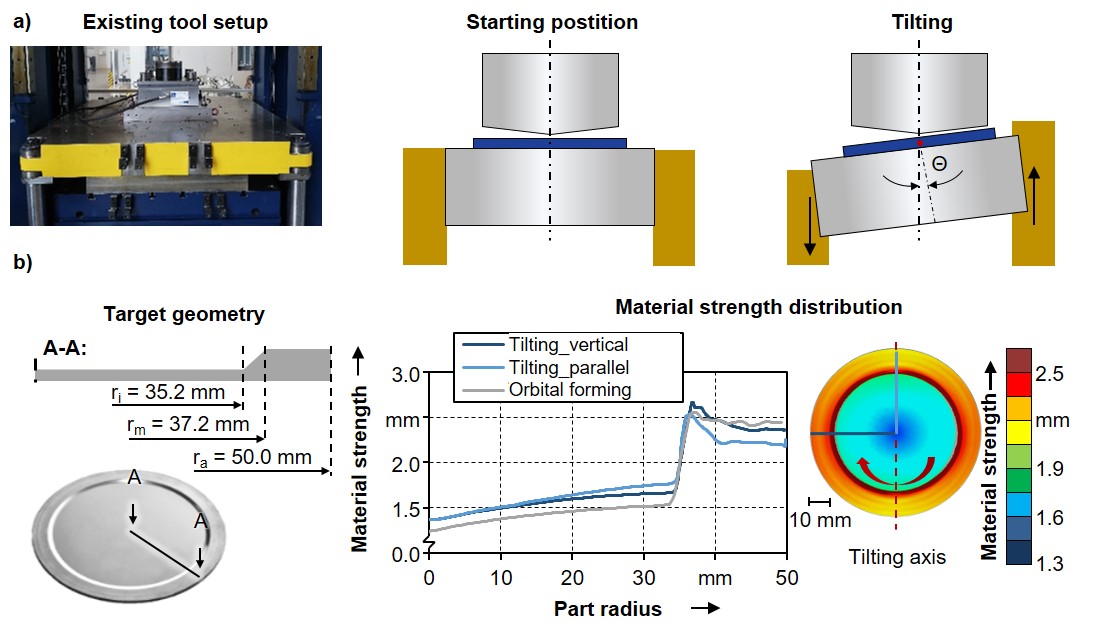T10 - Iterative forming process
Development of a forming process to manufacture near-net-shape functional components with a gradient in sheet thickness (DFG/TCRC73 -T10)
Project Status: Active
Last Update: 10.05.2021
Members
- Dr.-Ing. Dipl.-Wirtsch.-Ing. Michael Lechner
- Prof. Dr.-Ing. habil. Marion Merklein
- Dr.-Ing. Dipl.-Wirtsch.-Ing. Michael Lechner
- Prof. Dr.-Ing. habil. Marion Merklein
- M. Sc. Andreas Hetzel
Proposer
Head of Project
Researcher
The focus of the transfer project lies in the substitution of the conventional orbital forming process by an iterative combination of tilting and turning. The overall objective is to extend the process limits known from fundamental research by using an adapted process. On the one hand, the essential findings of fundamental research regarding the control of the material flow should be applied. On the other hand, the formability and efficiency of the process should be improved.
The basic advantages of the new process are:
- Use of a conventional press
- Increased tumbling angle and consequently a reduced contact area
Thus, the process time can be rueduced as well as the forming capacity increased.
Challenges of the innovative manufacturing process can be derived from the modified process characteristics and forming kinematics. Besides the analysis of the tilting process, the number of forming steps required to achieve the desired form filling should be evaluated. In addition, the maximum tilt angle and the resulting influence on the functional components must be evaluated. In order to increase the load capacity, the hardening behaviour of strongly hardened high performance steels during the forming process should be analysed to verify the omission of a subsequent hardening process. The target parameters should be optimized by an investigation and application of comprehensive process strategies.
The process characteristics to be investigated can be reproduced by using the current orbital forming process setup, allowing the characteristic tilting kinematic. Thus, the new process can be investigated fundamentally and at the same time, the effort for the production of the new tool concept can be prevented. Therefore, the development of a suitable method to ensure the applicability is required. Due to the expected change of the material flow components caused by the modified process kinematics, a material flow control is essential. A numerical simulation is used for the analysis of the material flow. The influence of the process parameters on the actual process should be investigated by evaluating reference parts produced with the adapted process. Due to the mentioned disadvantages of the current orbital forming process setup, the results of the adapted process transferred to a flexible tool concept for the use on a conventional press.
Fig. 1: Methodology within transfer project T10.







